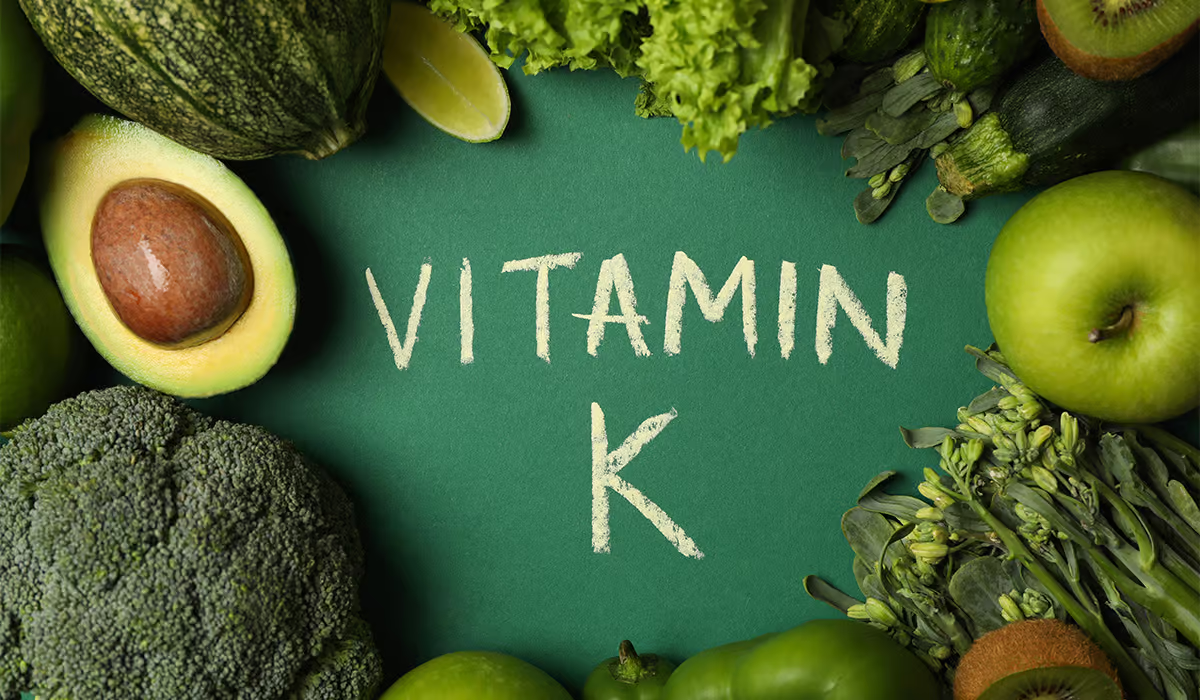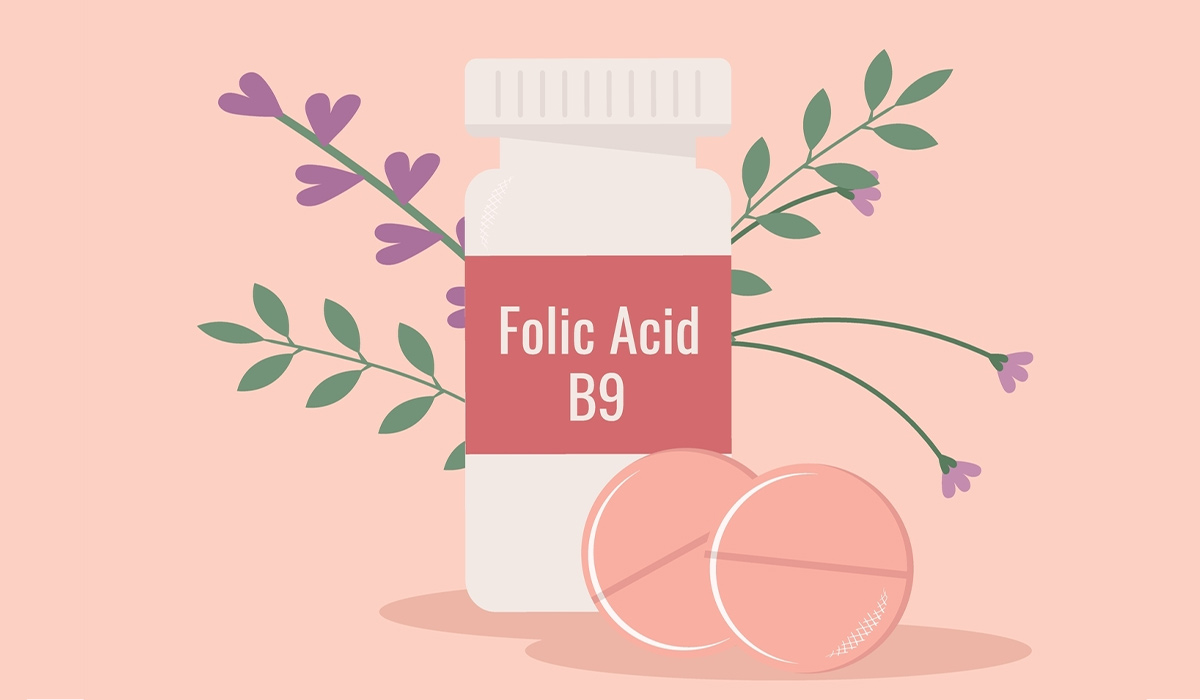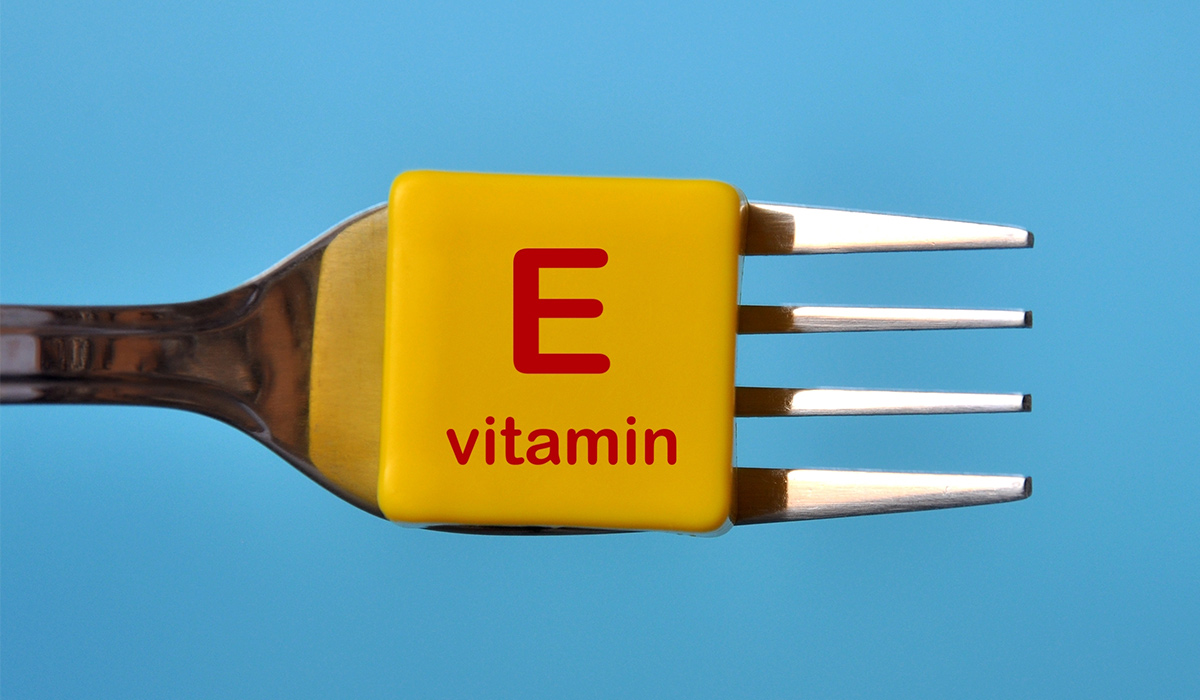We obtain vitamin B6 from consumed food, as it is absorbed into the bloodstream by the digestive tract. It is stored in various body parts like the liver, kidneys, muscles, and brain. While the intestines can synthesize small amounts of vitamin B6, it cannot satisfy the body’s demand for this substance. Therefore, taking vitamin B6 supplements is recommended.
Vitamin B6 was first discovered in 1934 by Paul Gyorgy, an American biochemist with Hungarian roots. He also found two other vitamins now classified under the B group – riboflavin (vitamin B2) and biotin (vitamin B7, B8, or H, depending on the region).
Vitamin B6 – benefits
Vitamin B6 turns out to be extremely important for the processes taking place in our body. Pyridoxine is primarily a precursor (cofactor) of coenzymes – an initiating and controlling factor – for over 100 different enzymes that regulate the course of key biochemical reactions. The processes in which the participation of pyridoxine turns out to be necessary include:
- amino acid transformations and synthesis of proteins and nucleic acids, which are necessary for proper growth and development (as a coenzyme of PAL aminotransferase, synthase, carboxylase, or racemase);
- metabolism of carbohydrates, fats, and nitrogen compounds;
- glycogen synthesis (a reserve substance for many significant organs);
- synthesis of serotonin and adrenaline hormones, thus supporting the proper functioning of the nervous system;
- hemoglobin production;
- regulating the level of cysteine.
Did you know that vitamin B6 plays a critical role in the absorption of magnesium? Magnesium is only partially absorbed from the digestive system, but pyridoxine, found in vitamin B6, can increase the degree of absorption of magnesium ions by 20-40%. That’s why magnesium preparations often contain vitamin B6 as one of their ingredients.
Vitamin B6 also supports the body during the treatment of anemia and kidney diseases(prevents the formation of kidney stones). What’s more, the proper level of vitamin B6 in the body helps to alleviate the side effects of long-term medication.
Pyridoxine also supports the body’s immune system by participating in the formation of antibodies. It also turns out to be essential for maintaining the proper level of blood pressure and harmonious work of the heart.
Vitamin B6 turns out to be especially important for women. It relieves the symptoms of PMSand menstrual pain.
Vitamin B6 deficiency
Vitamin B6 deficiency is relatively rare – pyridoxine and related compounds from the same group are present in numerous food products that we reach for every day.
Vitamin B6 deficiencyis found in pregnant and lactating women due to their increased need for this substance. However, it can also affect:
- seniors,
- heavy smokers,
- people who consume excessive amounts of alcohol,
- individuals taking certain medications,
- those who use hormonal contraception for an extended period.
Symptoms of vitamin B6 deficiency
Vitamin B6 deficiency can manifest itself through many ailments. Because pyridoxine regulates many processes in the body, the symptomsof its deficiency can be very diverse. They include:
- anemia;
- excessive nervousness or apathy;
- sleep disorders;
- problems with concentration;
- skin changes – redness, flaking;
- paraesthesia: tingling, trembling, or numbness in the extremities;
- dandruff and hair loss;
- lowered immunity and increased susceptibility to infections.
However, it is worth being aware that these are symptoms that also occur in deficiencies of other B vitamins. Further diagnostics are necessary to determine a deficiency of vitamin B6. If you observe such disturbing symptoms in yourself or your loved ones, it is worth consulting a doctor quickly to implement appropriate treatment or supplementation.
Here is a list of 9 signs of vitamin B6 deficiency.
Cracked lips
If you struggle with cracked lips, which often cause discomfort when eating and talking, it may be a sign of a vitamin B6 deficiency. Other symptoms that should get your attention are cracked corners.
Humor changes
Vitamin B6 helps while creating neurotransmitters such as serotonin and gamma-aminobutyric acid (GABA). These neurotransmitters can affect your mood. A pyridoxine deficiency can increase the risk of depression and heighten your perception of pain.
Low energy and constant fatigue
If you experience weakness, drowsiness, and fatigue, it may be a sign of vitamin B6 deficiency. This nutrient plays a crucial role in glucose reduction, which affects energy levels. Vitamin B6 is involved in the production of red blood cells. A lack of it can cause the cells to change shape and become smaller, leading to reduced oxygen transport and resulting in fatigue and apathy. That’s why it is significant to take vitamin B6 supplements to avoid anemia.

Convulsions
When there is not enough GABA due to a lack of pyridoxine, the brain can become overactive and lead to seizures. Symptoms of vitamin B6 deficiency may also include eye rolling, arm and leg twitching, muscle spasms, and loss of consciousness.
Dizziness and insomnia
The neurological symptoms of vitamin B6 deficiency also include sleep problems and dizziness. Apathy and nervousness may also occur.
Numbness of the limbs and a feeling of coldness
If you frequently experience coldness in your hands or numbness in your arms and legs, it could be a sign of pyridoxine deficiency. It’s significant to check your vitamin B6 level to ensure that you do not lack in this essential nutrient.
Weakened immunity
Too little vitamin B6 is associated with reduced production of antibodies necessary to fight infection. As a result, people with pyridoxine deficiency tend to get sick more often and are more prone to inflammation and infection.
Glossy tongue
An unusual sign of vitamin B6 deficiency may be a change in the appearance of the tongue. If it has become shiny, swollen, inflamed, and tender, the cause may be too low pyridoxine content. Signs of glossitis may also be caused by deficiencies in other vitamins from this group, including folic acid and vitamin B12.
Red rash
A red, itchy rash that makes everyday life difficult is another sign of vitamin B6 deficiency. This is because pyridoxine participates in the synthesis of collagen, an ingredient necessary to maintain healthy and beautiful skin.
Deficiency of vitamin B6 – consecvences
Vitamin B6 deficiency can cause a variety of ailments, including:
- neurological disorders,
- macrocytic anemia,
- in children – developmental disorders, epileptic disorders, bone structure abnormalities.
Please note that symptoms similar to those related to a deficiency of vitamin B6 can also be caused by a shortage of other B vitamins. If you have persistent or worrying symptoms, it is advisable to seek medical advice. They can confirm or rule out avitaminosis and suggest suitable treatment or supplementation. A homocysteine level test is one of the procedures used to detect vitamin B6 deficiency.
Pyridoxine deficiency – risk factors
People addicted to alcohol are more at risk of vitamin B6 deficiency. Other individuals with a higher risk of pyridoxine deficiency in the body are also:
- pregnant women;
- obese people;
- people struggling with diseases of the digestive system;
- patients with kidney problems;
- people suffering from autoimmune diseases.
While determining a pyridoxine deficiency, a blood test is necessary. If a deficiency is detected, it is advised to supplement with vitamin B6 (potentially with magnesium) or a complex of B vitamins depending on the severity. Incorporating healthy eating habits and adding foods that are rich in this nutrient to your diet can also be very helpful.
Vitamin B6’s basic source should be a properly composed diet during pregnancy, rich in products that are a source of vitamin B6. Learn about its functions and effects of deficiency and check whether and when it is worth implementing supplements containing vitamin B6 during pregnancy.
Why is vitamin B6 so important during pregnancy?
Pregnant womenhave an increased need for protein, increasing the need for pyridoxine.
In addition, vitamin B6 is also involved in the formation of blood cells, which is very important for pregnant women, whose blood volume increases by about 1 liter. It also supports the absorption of folic acid from food, which is extremely important for the proper development of the fetus, and iron – an element that prevents the development of anemia, which is quite common in pregnant women.
Moreover, pyridoxine affects the proper functioning of the nervous system and supports the immune system.

Vitamin B6 for pregnancy nausea – the role of vitamin B6 in the first trimester of pregnancy
Pregnant women need to get enough pyridoxine, especially during the first trimester. This vitamin can help reduce the nausea that many pregnant women experience. Vitamin B6 supplements are often used as the main treatment for pregnancy-related nausea and vomiting, with a recommended oral dose of 3×25 mg. However, it’s crucial to always consult with a doctor before taking any supplements or determining the appropriate daily dosage.
Magnesium and vitamin B6 in pregnancy – a perfect combination
A significant advantage of vitamin B6 during pregnancy is also its effect on the use of magnesium in the body. It affects the absorption of this element in the intestines, which is why magnesium supplements often also contain vitamin B6. Magnesium, in turn, soothes muscle cramps (usually in the calves and uterus), which is why its intake is recommended to many women in the second half of pregnancy.
Symptoms of vitamin B6 deficiency in pregnancy
A significant deficiency of pyridoxine is manifested by inflammation of the skin (eczema, mouth sores, seborrheic dermatitis), tongue, and oral cavity, as well as changes in the central nervous system. Therefore, you should not risk a deficiency of this vitamin in the body.
Vitamin B6 is involved in the production of red blood cells. Its too low level makes the erythrocytes too small and poorly stained, which is why the consequence of vitamin B6 deficiency during pregnancy may be microcytic anemia (a decrease in the amount of hemoglobin – a protein that transports oxygen from the lungs to the cells of the body). That can cause tissue hypoxia occurs, which has serious effects such as abnormal development of the baby’s organs, premature separation of the placenta, premature birth, and increased vulnerability of the newborn to infections.
Sources of vitamin B6 – what to remember when composing a pregnancy diet?
The recommended intake of vitamin B6 in pregnancy increases from 1.3 mg to 1.9 mg per day. The best source of this vitamin for the expectant mother is a proper diet during pregnancy, so you should include products rich in pyridoxine in your daily menu.
Important vitamins for pregnant women – when is vitamin B6 supplementation necessary?
Studies have shown that the level of vitamin B6 during pregnancy drops the most in the third trimester, which can lead to its deficiencies. This is probably due to the increased demand for the fetus and the increasing weight of the pregnant woman. Therefore, in the bodies of some future mothers, pyridoxine supplementation during pregnancy may be indicated. Remember, however, not to take any preparations, even special vitamins for pregnant women, without consulting your doctor. The legitimacy of intake and the dose of the mentioned vitamin during pregnancy is always determined by the specialist.
Excess vitamin B6
Excess vitamin B6 is extremely rare. It appears only when we supplement this substance incorrectly, taking more than 200 mg of synthetic pyridoxine per day. Therefore, special attention should be paid not to exceed this limit – an overdose of vitamin B6 can result in serious consequences, such as:
- degeneration of nerve tissue (neuropathy);
- coordination problems, muscle weakness, and strange gait;
- feeling cold all the time;
- tingling in the limbs;
- problems with the economy of amino acids in the body.
In some cases, symptoms resolve after discontinuation of supplementation. It happens, however, that the changes caused by excess vitamin B6 turn out to be irreversible.
Vitamin B6 – dosage
How much should vitamin B6 be taken? The dosage depends on your age, gender, and general health. According to the American National Institutes of Health, the recommended daily intake (RDA) of vitamin B6 is:
- children from 1 to 3 years of age: 0.5 mg;
- children from 4 to 6 years of age: 0.6 mg;
- children from 7 to 9 years of age: 1 mg;
- boys from 10 to 12 years of age: 1.2 mg;
- boys 13 to 18 years of age: 1.3 mg;
- girls from 10 to 18 years of age: 1.2 mg;
- men aged 19 to 50: 1.3 mg;
- men over 50: 1.7 mg;
- women aged 19 to 50: 1.3 mg
- women over 50: 1.5 mg
- pregnant women: 1.9 mg;
- women during breastfeeding: 2 mg.

Vitamin B6 – where to find it?
As already mentioned, vitamin B6 is quite common in many popular food products – both plant and animal.
The greatest amount of vitamin B6 can be found in brewer’s yeast, as well as in wholemeal products, such as wheat bran, brown rice, or groats (especially buckwheat). Other good sources of pyridoxine can also be:
- poultry, especially turkey breast meat;
- beef and pork liver;
- fish, especially salmon, mackerel, and cod;
- white beans;
- soy;
- wholegrain bread;
- eggs;
- some cheeses;
- whole grains;
- quinoa;
- nuts;
- seeds;
- legumes;
- fruit, especially: bananas, kiwis, oranges, strawberries, raspberries, dried apricots, and currants;
- vegetables, especially: broccoli, carrots, brussels sprouts, red peppers, tomato juice, potatoes, and white cabbage.
Vitamin B6 is water soluble and very sensitive to light. For this reason, it is recommended to consume products rich in it raw or after a short thermal treatment.
Thermal processing and preservation of food adversely affect the content of vitamin B6. Cooking, frying, and curing meat causes us to lose 30 to 50% of the pyridoxine present in it. The same applies to freezing vegetables and fruits: losses range from 15 to even 70%.
Sources
- The History of Vitamin B6. Introductory Remarks. ScienceDirect. https://www.sciencedirect.com/science/article/abs/pii/S008367290860343X.
- Vitamin B6 (Pyridoxine). NIH. https://www.ncbi.nlm.nih.gov/books/NBK557436/.
- Vitamin B6 Deficiency. NIH. https://www.ncbi.nlm.nih.gov/books/NBK470579/.
- B Vitamins and the Brain: Mechanisms, Dose and Efficacy—A Review. NIH. https://www.ncbi.nlm.nih.gov/pmc/articles/PMC4772032/.
- Vitamin B6. NIH. https://ods.od.nih.gov/factsheets/VitaminB6-Consumer/.
- Vitamin B6. NIH. https://ods.od.nih.gov/factsheets/VitaminB6-HealthProfessional/.
- VITAMIN B6. The University of North Dakota. https://und.edu/student-life/dining/_files/docs/fact-sheets/vitamin-b6.pdf.
- Pregnancy outcome following use of large doses of vitamin B6 in the first trimester. NIH. https://pubmed.ncbi.nlm.nih.gov/17130022/.
- Vitamin B6 During Pregnancy. Sage Journal. https://journals.sagepub.com/doi/abs/10.1177/026010608200100203?journalCode=naha.
- Vitamin B6 Intake and the Risk of Incident Kidney Stones. NIH. https://www.ncbi.nlm.nih.gov/pmc/articles/PMC5752631/.
- Effect of magnesium and vitamin B6 supplementation on mental health and quality of life in stressed healthy adults: Post-hoc analysis of a randomised controlled trial. NIH. https://pubmed.ncbi.nlm.nih.gov/33864354/.
- Efficacy of vitamin B-6 in the treatment of premenstrual syndrome: systematic review. NIH. https://www.ncbi.nlm.nih.gov/pmc/articles/PMC27878/.
- Vitamin B6 and immune competence. NIH. https://pubmed.ncbi.nlm.nih.gov/8302491/.
- Vitamin B6: Amazing Benefits, Deficiency Signs and More
- What is Vitamin B6?
- Vitamin B6 – benefits
- Vitamin B6 deficiency
- Why is vitamin B6 so important during pregnancy?
- Vitamin B6 for pregnancy nausea – the role of vitamin B6 in the first trimester of pregnancy
- Magnesium and vitamin B6 in pregnancy – a perfect combination
- Symptoms of vitamin B6 deficiency in pregnancy
- Sources of vitamin B6 – what to remember when composing a pregnancy diet?
- Important vitamins for pregnant women – when is vitamin B6 supplementation necessary?
- Excess vitamin B6
- Vitamin B6 – dosage
- Vitamin B6 – where to find it?









